2011 vs AM4. Dinosaurs vs Mammals
This is not so much an independent publication as an addition and, most importantly, a correction of my last year’s 1155 vs 2011. Only old people go into battle . Then I didn’t have the AM4 platform in my hands for comparison, and not so much the article itself, as some of my comments on it, were not quite true. The time has come to correct the injustice.
So, another participant by and large of the same test:
MB : ASUS ROG Strix X470F-Gaming (BIOS 4602, AGESA ComboAM4 0.0.7.2 with Zen2 support)
CPU : AMD Ryzen 7 2700X
RAM : G.Skill Trident Z DDR4 DIMM 3600MHz PC4 -28800 CL17 @ 3400CL16
CPU operating mode - drain + activated XFR on the motherboard (corresponds to the default settings). Manually only reduced the core voltage by 0.9V.
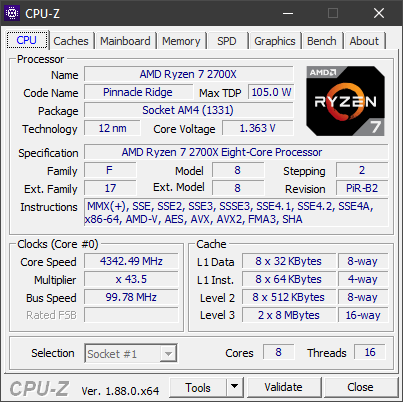
The main timings according to CPU-Z:

But in the case of the AM4 platform, secondary and tertiary timings are no less interesting and affect the overall performance of the platform no less than the primary ones:
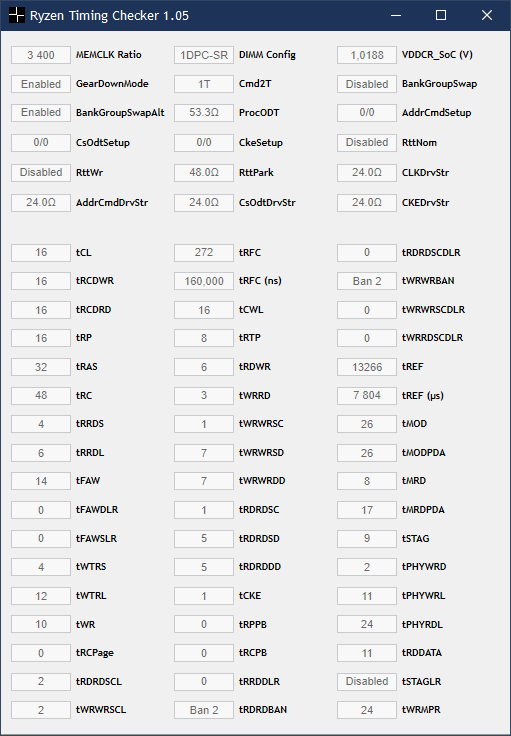

Timing and memory voltage were set manually in accordance with the recommendations of DRAM Calculator for Ryzen 1.4.0, checked by Ryzen Timing Checker. The stability of the platform was tested through Prime95 Blend. Despite the fact that Prime95 Small FFTs are better at warming the cores directly, Blend is much better at identifying problems with the memory controller / dice itself.
For comparison, the same test for 2011v2:
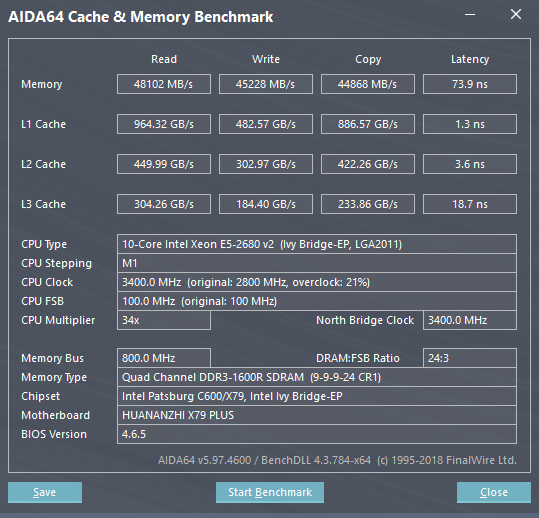
On high-frequency DDR4 memory in dual channel mode on the AM4 platform, memory bandwidth is generally higher, and the latency is less than on DDR3 in four-channel Intel 2011v2. But such indicators are achievable only on the rather expensive Samsung B-Die memory with manual timing settings. In the case of using Hynix strips, low timings at high frequencies are unlikely to be stabilized (judging by the statistics of the authors of DRAM Calculator for Ryzen, I personally did not check it), and the delays will be ± at the level of old Xeons on DDR3 Registered.
AM4 platform tests were run under Windows 10 Pro 1809 (build 17763.437).
Specter and Meltdown protection was deactivated on all test systems using the InSpectre utility.
All tests were carried out several times (at least three or four), the result of the first run was discarded, since the result of the first run was noticeably more affected by I / O delays. The maximum result was taken, the rest of the test runs were carried out to check for possible anomalies.
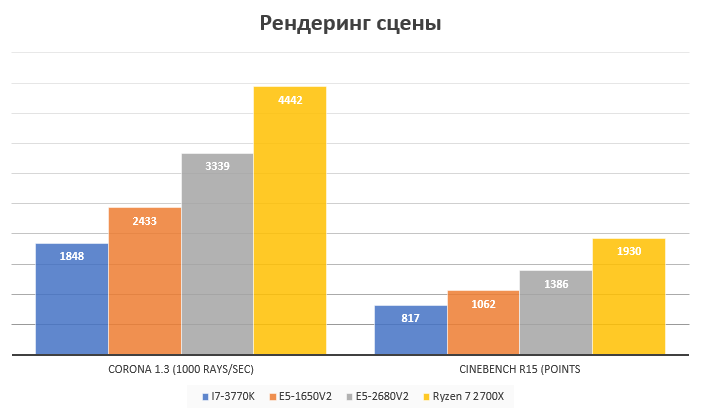

Conversion time 319 images from NEF to JPEG in seconds. Less is better.
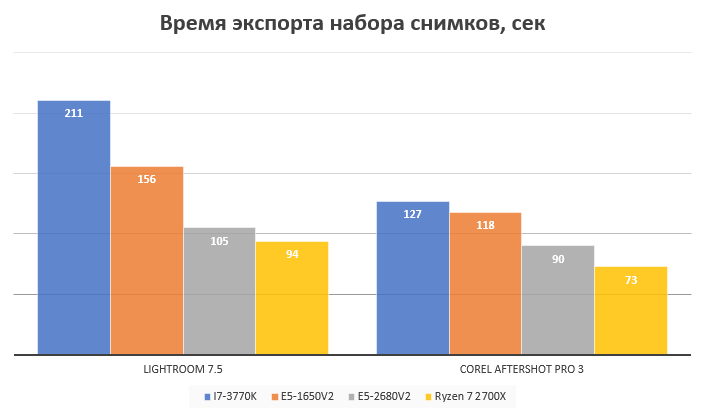
In the diagrams of gaming performance, I decided to add the indicator "Average FPS" for clarity. What is the clarity? See for yourself:

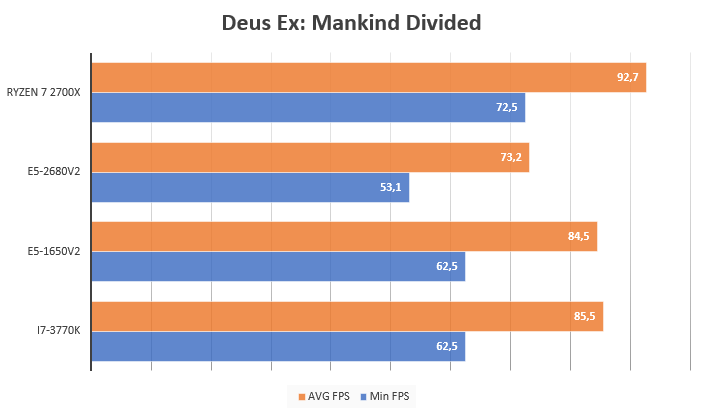
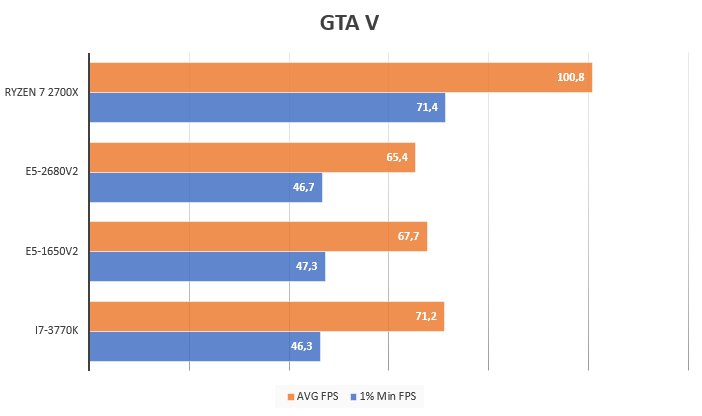
Minimum FPS on Ryzen is in some places higher than average FPS on older platforms.
Conclusions? Modern platforms provide not only great energy efficiency (although just about the consumption, the AM4 for XFR is fun, the stone under load consumes up to 160W), but also with the naked eye a noticeable high performance.
Judging by the comments, not everyone understands how much the performance of the AM4 platform depends on memory. Unfortunately, the full cycle of tests on the default memory settings cannot be removed quickly, but I still drove a couple of the main ones:
The operating mode of the memory is set to the factory specifications. Frequency 3600, XMP timings.
The settings were as follows:
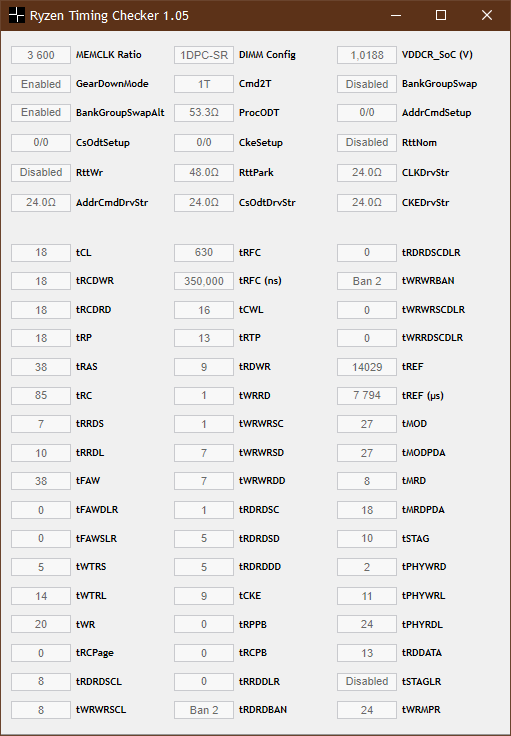
These are the results of a low-level memory test:

These are the ones in Far Cry 5

For comparison, the graph from it is the same, but with a normally configured memory:
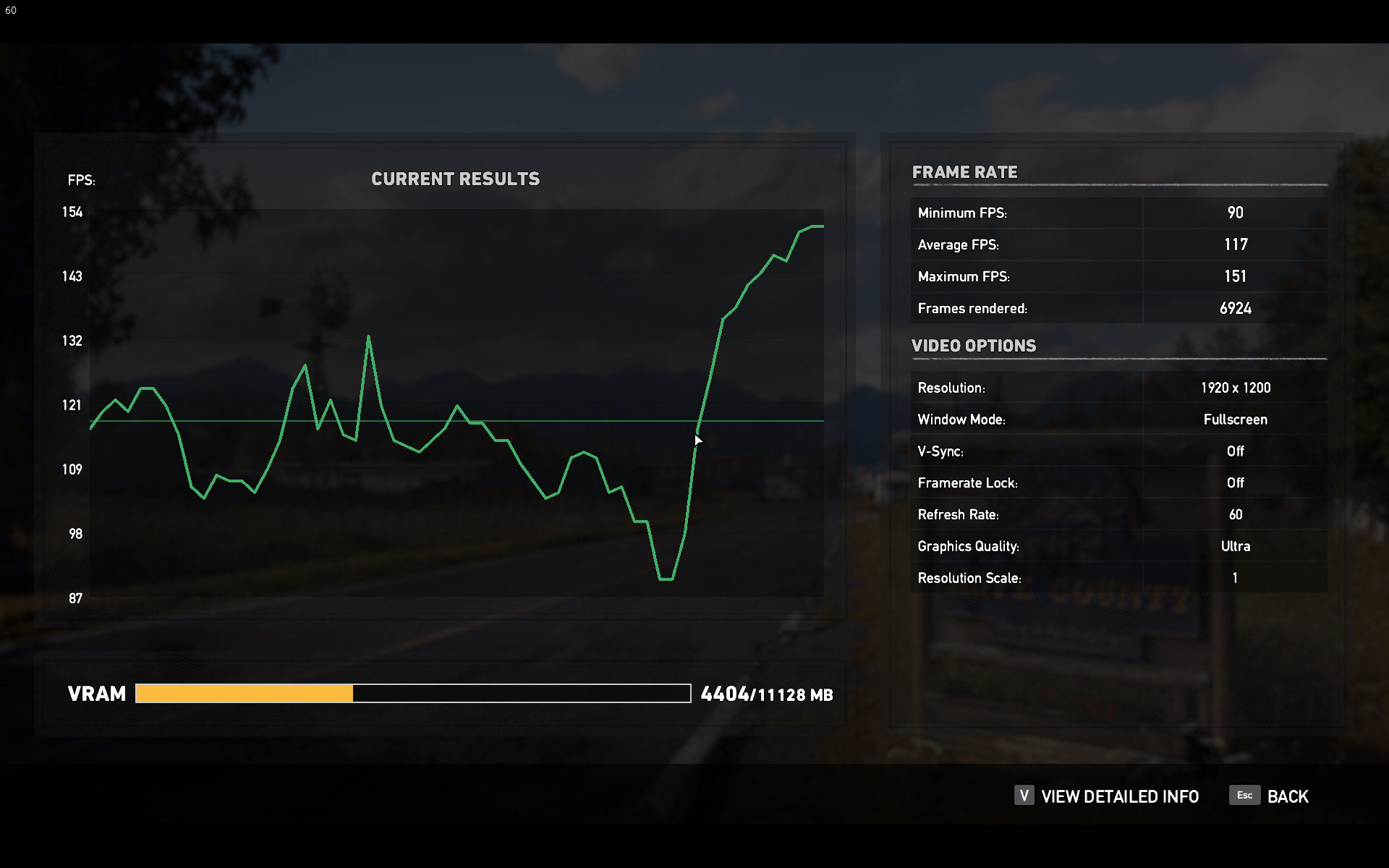
Total immediately somewhere lost 10 FPS. Just setting the memory frequency to 200MHz ABOVE, but scoring on the timings, I got a performance drop of more than 10%. And this is by no means the Hynix memory for 2400 or not by night be remembered by 2100 with default timings, when also the performance of Infinity Fabric drops sharply, and quite good Samsung B-Die at default settings.
So, another participant by and large of the same test:
MB : ASUS ROG Strix X470F-Gaming (BIOS 4602, AGESA ComboAM4 0.0.7.2 with Zen2 support)
CPU : AMD Ryzen 7 2700X
RAM : G.Skill Trident Z DDR4 DIMM 3600MHz PC4 -28800 CL17 @ 3400CL16
CPU
CPU operating mode - drain + activated XFR on the motherboard (corresponds to the default settings). Manually only reduced the core voltage by 0.9V.

Memory mode
The main timings according to CPU-Z:

But in the case of the AM4 platform, secondary and tertiary timings are no less interesting and affect the overall performance of the platform no less than the primary ones:

Memory Subsystem Test Results

Timing and memory voltage were set manually in accordance with the recommendations of DRAM Calculator for Ryzen 1.4.0, checked by Ryzen Timing Checker. The stability of the platform was tested through Prime95 Blend. Despite the fact that Prime95 Small FFTs are better at warming the cores directly, Blend is much better at identifying problems with the memory controller / dice itself.
For comparison, the same test for 2011v2:

On high-frequency DDR4 memory in dual channel mode on the AM4 platform, memory bandwidth is generally higher, and the latency is less than on DDR3 in four-channel Intel 2011v2. But such indicators are achievable only on the rather expensive Samsung B-Die memory with manual timing settings. In the case of using Hynix strips, low timings at high frequencies are unlikely to be stabilized (judging by the statistics of the authors of DRAM Calculator for Ryzen, I personally did not check it), and the delays will be ± at the level of old Xeons on DDR3 Registered.
Testing methodology
AM4 platform tests were run under Windows 10 Pro 1809 (build 17763.437).
Specter and Meltdown protection was deactivated on all test systems using the InSpectre utility.
All tests were carried out several times (at least three or four), the result of the first run was discarded, since the result of the first run was noticeably more affected by I / O delays. The maximum result was taken, the rest of the test runs were carried out to check for possible anomalies.
Rendering

3DMark Time Spy

Developing RAW
Conversion time 319 images from NEF to JPEG in seconds. Less is better.

Games
In the diagrams of gaming performance, I decided to add the indicator "Average FPS" for clarity. What is the clarity? See for yourself:



Minimum FPS on Ryzen is in some places higher than average FPS on older platforms.
Conclusions? Modern platforms provide not only great energy efficiency (although just about the consumption, the AM4 for XFR is fun, the stone under load consumes up to 160W), but also with the naked eye a noticeable high performance.
UPD from 2019/05/04 22:40
Judging by the comments, not everyone understands how much the performance of the AM4 platform depends on memory. Unfortunately, the full cycle of tests on the default memory settings cannot be removed quickly, but I still drove a couple of the main ones:
The operating mode of the memory is set to the factory specifications. Frequency 3600, XMP timings.
The settings were as follows:

These are the results of a low-level memory test:

These are the ones in Far Cry 5

For comparison, the graph from it is the same, but with a normally configured memory:

Total immediately somewhere lost 10 FPS. Just setting the memory frequency to 200MHz ABOVE, but scoring on the timings, I got a performance drop of more than 10%. And this is by no means the Hynix memory for 2400 or not by night be remembered by 2100 with default timings, when also the performance of Infinity Fabric drops sharply, and quite good Samsung B-Die at default settings.
